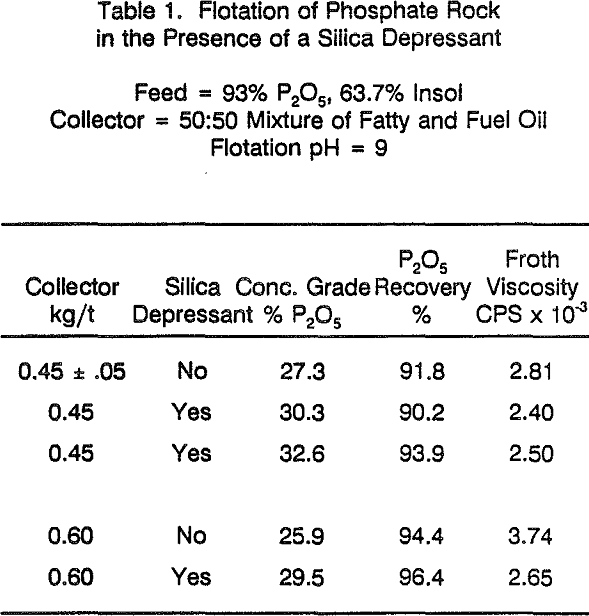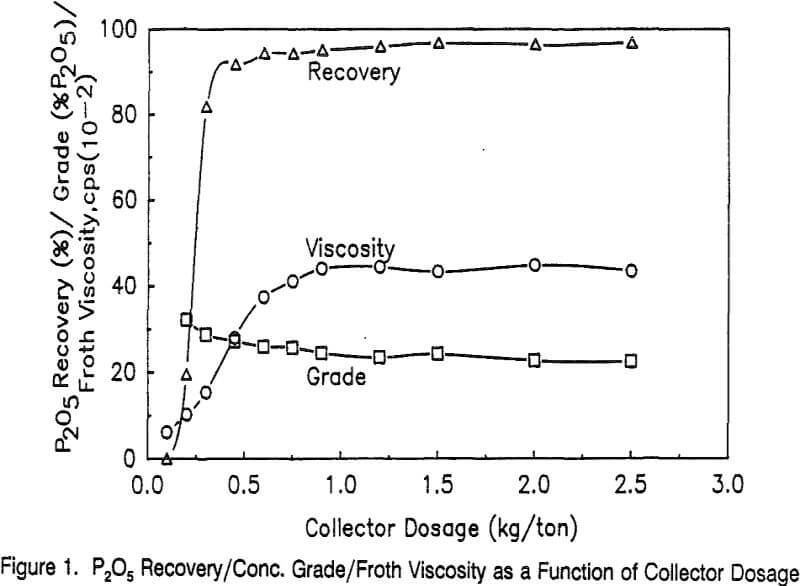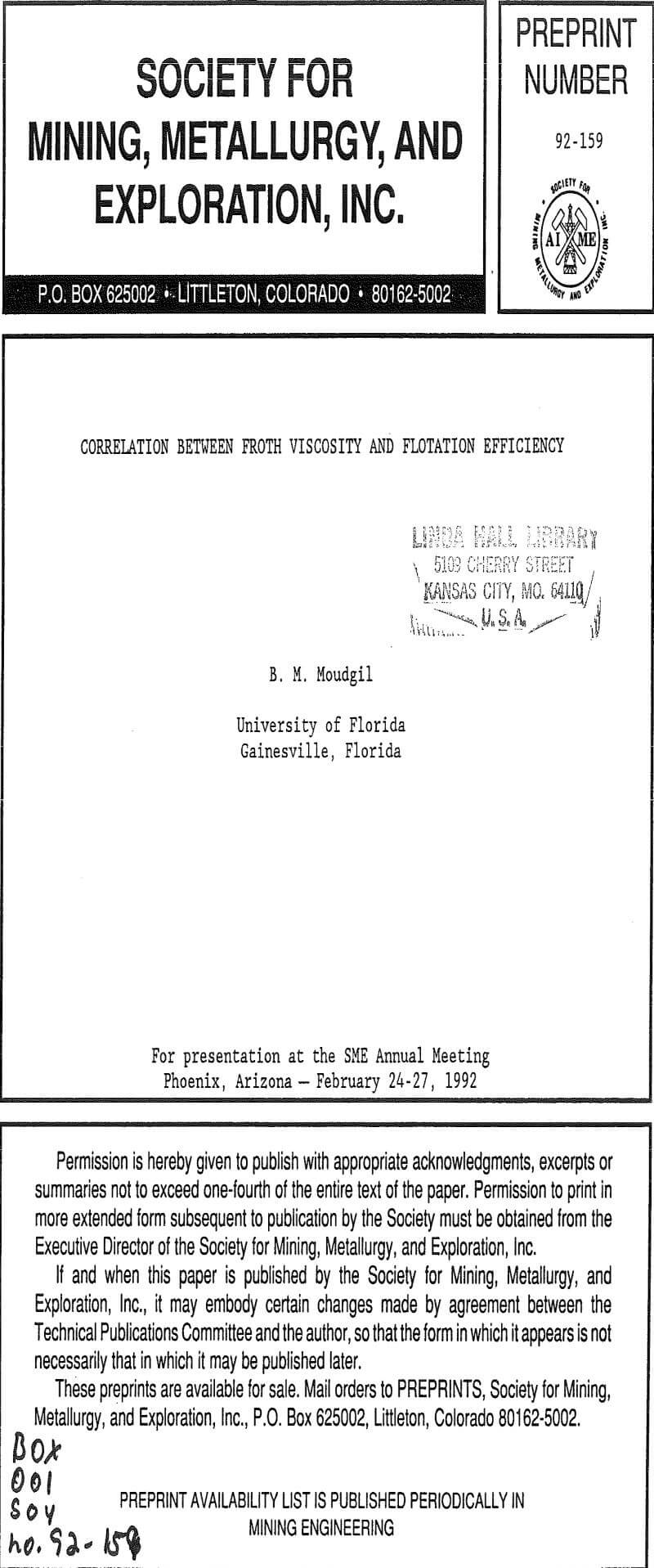Flotation efficiency is governed by the wettability of the solid as well as the surface tension at the liquid/gas interface. Both these properties in turn determine the frothing characteristics encountered in a flotation process. A number of studies have focussed on the correlation between wettability as monitored by contact angle and flotation recovery.
Frothing properties which are relevant in a flotation process are froth volume, froth viscosity, and froth stability. It is desired that froth collapses soon after it is skimmed off from the flotation cells. Excessive froth volumes cause a loss in throughput and very high froth viscosity have an adverse impact on carryover of hydrophilic particles in froth as well as higher froth stability.
Experimental
Maximum in concentrate grade, minimum in phosphate recovery and minimum in froth viscosity, occur at the lowest collector dosage examined. As the collector dosage is increased recovery of phosphate becomes higher along with froth viscosity, the concentrate grade, however, decreases indicating that more and more silica is reporting in the float fraction.
It is observed that addition of silica depressant results in higher grade and may also improve the recovery depending on the collector dosage. In all cases, however, the froth viscosity decreased in the presence of silica depressant.



